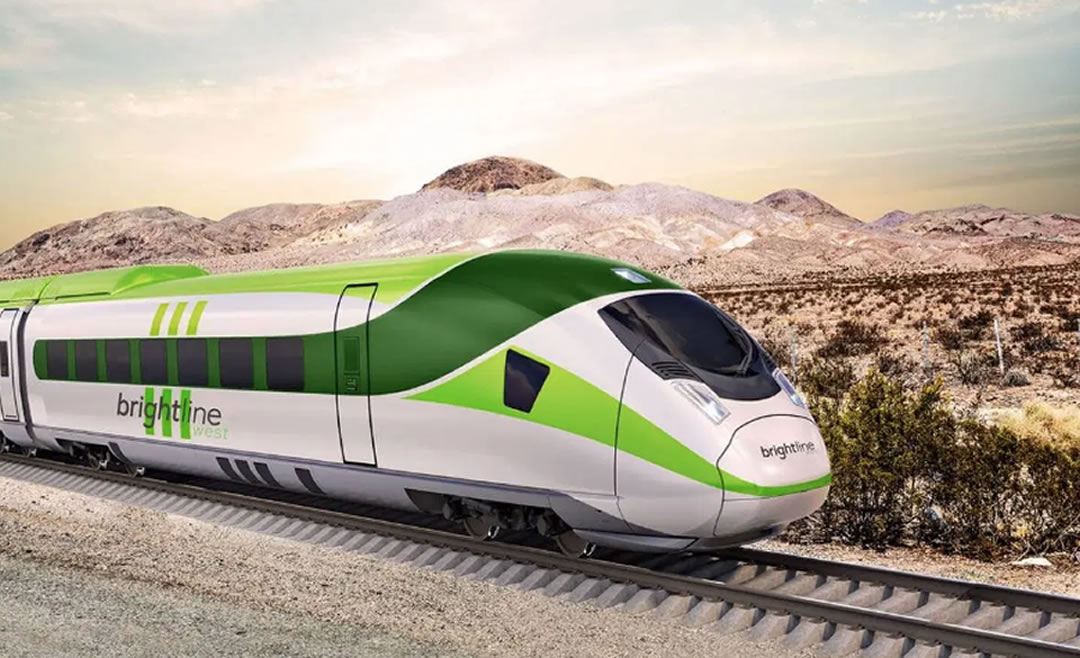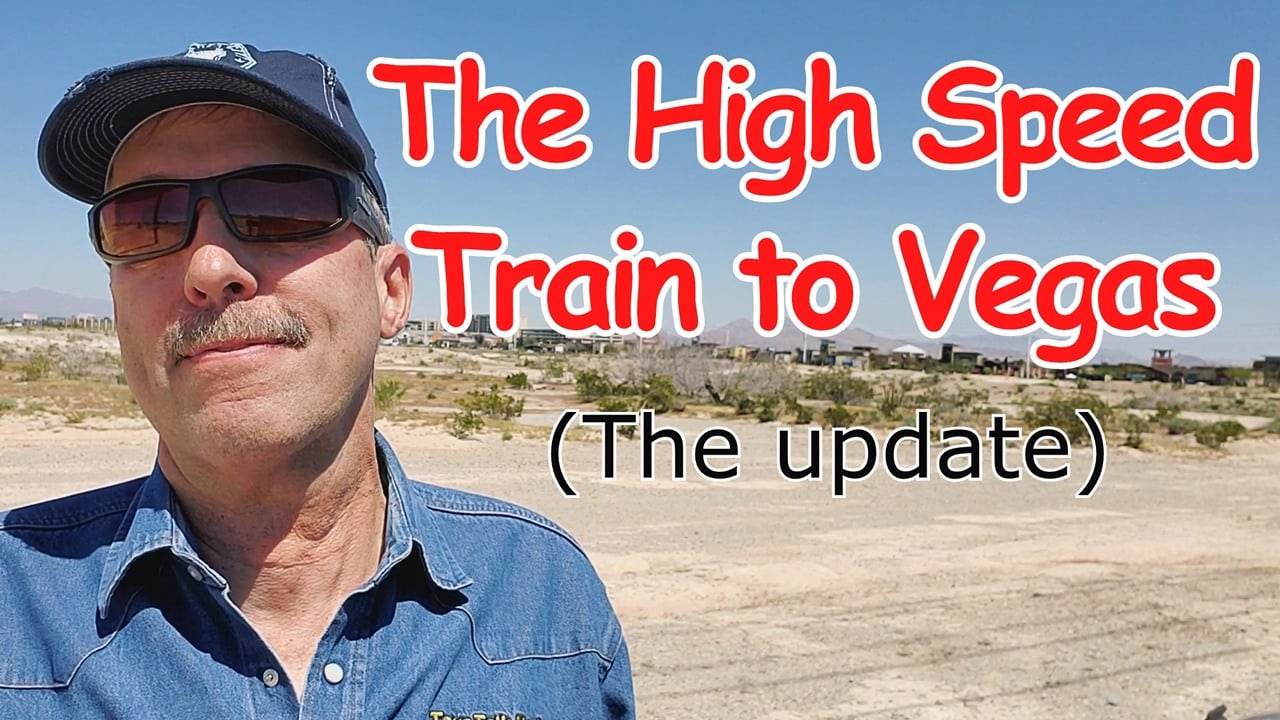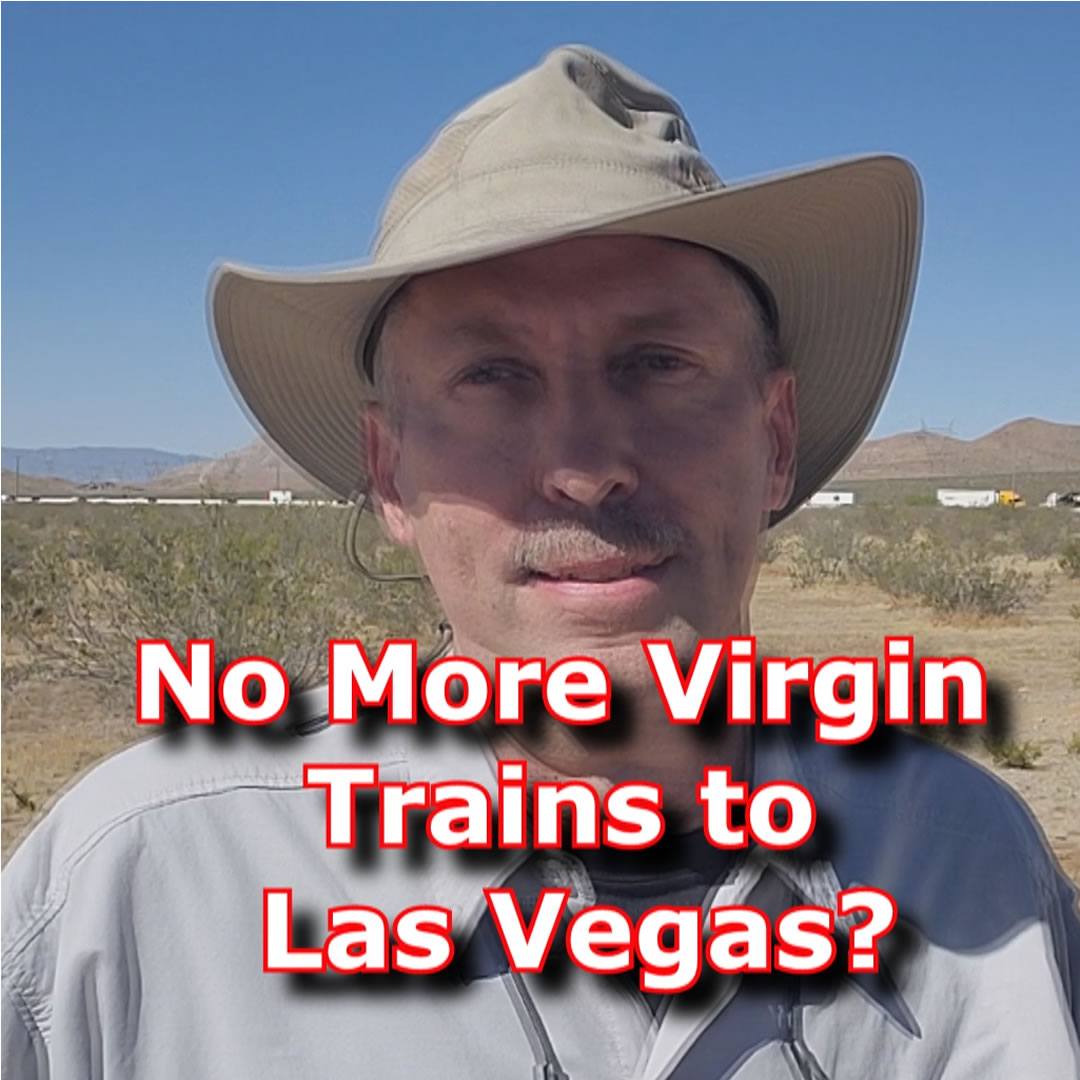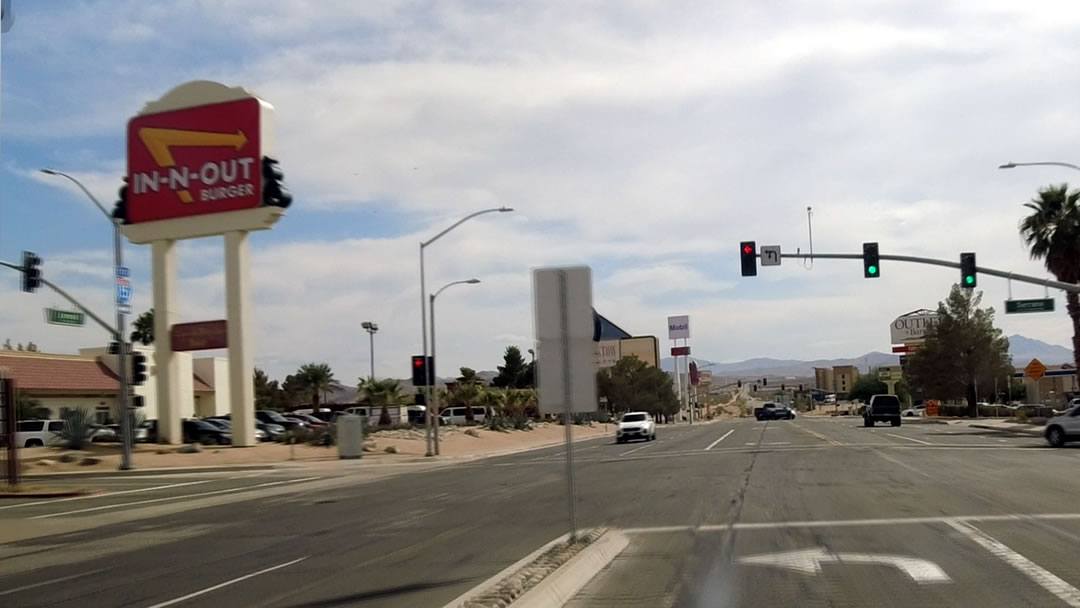
(Update 7/24/22)
Have you heard about that high-speed train to nowhere?? A pipedream for shuttling tourists between Los Angeles, California, and Las Vegas, Nevada. Promising to turn a four-hour drive into a ninety-minute train ride? I’m betting you have.
It started out as all grand plans do. With a dream and some really cool-looking artists renderings. This dream started in the 1990s. For almost the next twenty years, it was nothing more than some press releases and an occasional demo train car parked on a siding in Las Vegas. But it was going to happen!! That’s what “they” kept telling us.
Finally, in 2005 it started to turn from a dream to reality. That’s when DesertXpress Enterprises, LLC was founded. Still, no rails on the ground or any real plans emerged. But it was going to happen soon! That’s what “they” kept telling us.
Then in 2012 the rights of the project were acquired by Florida-based passenger rail operator Brightline and became known as XpressWest. Brightline is a privately run inter-city rail route between Miami and West Palm Beach, Florida that runs on a track owned by Florida East Coast Railway. With them in the driver’s seat, things began to happen, sort of.
With them in the driver’s seat, things began to happen, sort of. They have acquired the land for the stations as well as gotten the right of way for the tracks. They did more in one year than the previous owners did in twenty years!
So now it’s beginning to look real. Private money has been spent and land has been purchased. And then the pandemic hit and now we are back to waiting.
XpressWest is a private venture proposal to build a privately funded high-speed rail passenger train in the Western United States from Apple Valley, California to Las Vegas.”
History of the Project
2005
DesertXpress Enterprises, LLC was founded in 2005 to develop, construct, own and operate the high-speed rail project. 70 % of the company was held by Anthony A. Marnell II of Marnell Corrao Associates through his DX, LLC company whereas Gary Tharaldson and François Badeau held 20 and 10 %, respectively.
The train would travel at speeds of up to 150 mph (240 km/h) averaging 130 mph (210 km/h) and making the 186 mi (299 km) trip from Victorville to Las Vegas in about 1 hour 24 minutes. In March 2010, executives with the project said they expected construction to begin in 2010. In October 2011, construction was planned to begin in the last quarter of 2012, with completion in the last quarter of 2016, subject to funding.
2012
DesertXpress Enterprises, LLC becomes XpressWest as the developer sees its future growth to include a link between Las Vegas and Phoenix, Arizona, and another from Las Vegas to Salt Lake City, Utah, and Denver, Colorado.
The initial 185-mile (298 km) link between Las Vegas and Victorville was designed to be double-tracked which is dedicated to high-speed trains. The costs of this section were estimated at $6.9 billion. The developer would put up $1.4 billion in private investment and the rest of the funding would be borrowed under the Railroad Rehabilitation and Improvement Financing program provided by the Federal Railroad Administration.
2013
The federal loan was indefinitely suspended. Reports indicate the suspension was in part due to the failure of the application in regard to the “Buy America” policy which required applicants to use American-made products. Despite the indefinite suspension of the federal loan application, which was viewed as a denial of the application, the developer indicated that the XpressWest project would proceed without providing the details on the financial plan.
2015
On September 17, 2015, XpressWest and the newly formed China Railway International USA (a consortium of Chinese rail industry companies) announced a joint venture to design, build, and operate the service between Las Vegas and Palmdale, with construction planned to begin in September 2016.
2016
In June 2016, XpressWest announced that the joint venture had been called off. The biggest reason cited for the termination of the joint venture was a federal regulation requiring the manufacture of high-speed trains inside the United States. XpressWest said that they are “undeterred by this development and remain dedicated to completing its high-speed passenger rail project.”
2018
On September 18, 2018, Fortress Investment Group, which owns Floridian intercity service Brightline, announced that it would acquire the XpressWest project from Marnell, indicating that it would begin construction of the rail line in 2020 with expected completion in 2023. The project is expected to generate around 18,000 jobs at its peak. Although Los Angeles County finished an environmental assessment for the project in 2016, the exact date the project is supposed to start is unclear; however, by October 2019, design plans were almost 30 percent complete and construction crews were being hired.
2019
Fortress entered a partnership with the Virgin Group. The newly-formed Virgin Trains USA consortium began operating Brightline in 2019. It was then announced that this consortium will operate XpressWest when it opens. Oops, The consortium was called off in August 2020.
2020
The company entered into an agreement to lease the State-owned Interstate 15 right-of-way from Caltrans. The 50-year lease is in the amount of $842,000 per year starting in 2020, adjusted according to the consumer price index every three years.
Additionally, Brightline entered into a memorandum of understanding with the San Bernardino County Transportation Authority to build a spur from Apple Valley to Rancho Cucamonga, providing connectivity within the Inland Empire and Greater Los Angeles.
2021
Due to the pandemic and resulting changes in travel needs and demands, Brightline is now expected to break ground in 2023 with the first trains rolling into Las Vegas in 2026
2022
Brightline is working with the State of California to build a connecting line from Apple Valley to Union Station in Downtown Los Angeles
It’s going to happen. That’s what “they” kept telling us.
Tags To Follow




Be the first to comment